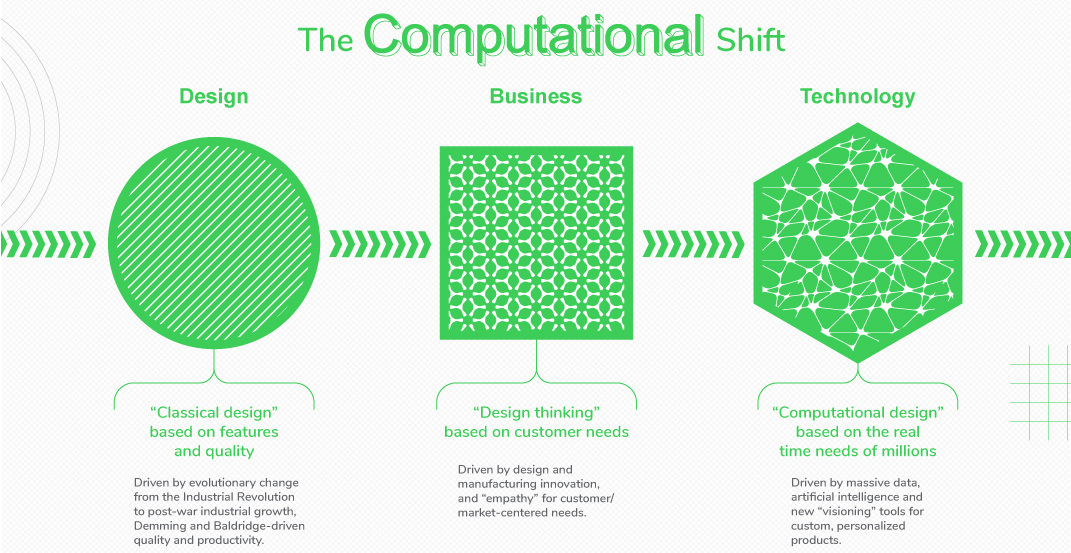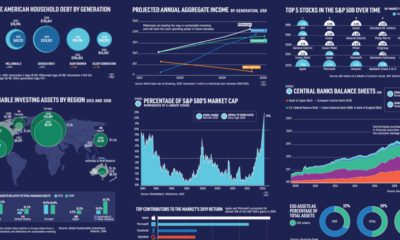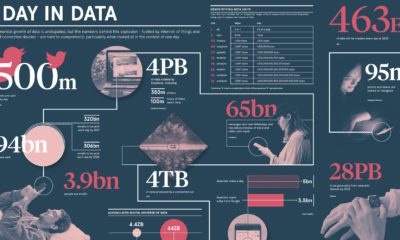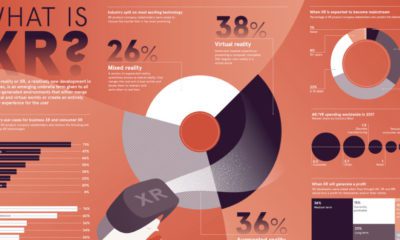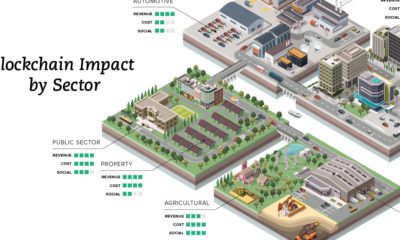Technology
Imagining the Future of Design and Collaboration

Imagining the Future of Design and Collaboration
New technologies are getting adopted faster and faster.
In the modern business environment, it no longer takes multiple decades for new ideas to take root. Instead, thanks to increased connectivity, instantaneous communication, and big leaps in computing power, these new innovations can rise to prominence in much shorter time spans.
As these changes surface, companies can either help pioneer these new technologies – or they can be caught off guard by their impact on industry.
A Fundamental Shift
Today’s infographic comes to us from Schneider Electric, and it dives into the many technological forces that will be re-shaping the future of design and collaboration.
It touches on an exciting but uncertain future for industrial designers, architects, engineers, and other design-oriented industries, in which rising processing power and new technologies are re-wiring the fundamental relationship between the designer and the end product.
Almost certainly, these forces will shape a competitive landscape for the design industry that will seem almost completely unfamiliar over the next decade or so.
The Computational Era
Computer-aided design (CAD) has already revolutionized design, but it turns out that CAD only scratches the surface of what is possible with computers.
The rapid increase in processing power, the miniaturization of devices, new algorithms, and increased connectivity are leading to a new era of computational design.
Instead of designers using computers as a tool, computers are now able to generate insights, make creative leaps, and jump to decisions using massive data sets – and this will fundamentally change the designer’s role in the creative process.
In the future, designers will be more like mentors for computers by providing their guidance and experience.
The Forces Shaping Design
What do we mean when we say “computational design”?
Infinite computing
Tapping into cloud-based computing power to try thousands of design permutations.
Big data & predictive analytics
Using billions of data points and predictive analytics to create new or highly customized products.
Generative design
Computers mimic nature’s evolutionary approach to design.
AI / Machine learning
Designing a system that learns and adapts over time.
The Forces Shaping Collaboration
But how design is changing doesn’t stop there – how we collaborate on design is also undergoing a revolution:
AR/VR
Virtual collaboration can be achieved across the globe, allowing designers to work in parallel.
Cloud-based collaboration
Design is no longer siloed and can be democratized between different stakeholders. Further, teams can work simultaneously from all over the world.
Crowdsourcing
Input for design and specialized parts can be crowdsourced.
3d and 4d printing
Design and manufacturing can be integrated seamlessly, even to customize individual items. 4d printing is a new frontier where printed objects adapt to various circumstances.
An Uncertain Future
Data, computing power, and new tools are enabling a rapid transition in how we design and collaborate.
No one can be certain about how different the future of design and collaboration will be, or how it will affect business models – but for companies to remain relevant and competitive over the coming years, they will need to be watching this technological revolution very closely.
Technology
All of the Grants Given by the U.S. CHIPS Act
Intel, TSMC, and more have received billions in subsidies from the U.S. CHIPS Act in 2024.

All of the Grants Given by the U.S. CHIPS Act
This was originally posted on our Voronoi app. Download the app for free on iOS or Android and discover incredible data-driven charts from a variety of trusted sources.
This visualization shows which companies are receiving grants from the U.S. CHIPS Act, as of April 25, 2024. The CHIPS Act is a federal statute signed into law by President Joe Biden that authorizes $280 billion in new funding to boost domestic research and manufacturing of semiconductors.
The grant amounts visualized in this graphic are intended to accelerate the production of semiconductor fabrication plants (fabs) across the United States.
Data and Company Highlights
The figures we used to create this graphic were collected from a variety of public news sources. The Semiconductor Industry Association (SIA) also maintains a tracker for CHIPS Act recipients, though at the time of writing it does not have the latest details for Micron.
| Company | Federal Grant Amount | Anticipated Investment From Company |
|---|---|---|
| 🇺🇸 Intel | $8,500,000,000 | $100,000,000,000 |
| 🇹🇼 TSMC | $6,600,000,000 | $65,000,000,000 |
| 🇰🇷 Samsung | $6,400,000,000 | $45,000,000,000 |
| 🇺🇸 Micron | $6,100,000,000 | $50,000,000,000 |
| 🇺🇸 GlobalFoundries | $1,500,000,000 | $12,000,000,000 |
| 🇺🇸 Microchip | $162,000,000 | N/A |
| 🇬🇧 BAE Systems | $35,000,000 | N/A |
BAE Systems was not included in the graphic due to size limitations
Intel’s Massive Plans
Intel is receiving the largest share of the pie, with $8.5 billion in grants (plus an additional $11 billion in government loans). This grant accounts for 22% of the CHIPS Act’s total subsidies for chip production.
From Intel’s side, the company is expected to invest $100 billion to construct new fabs in Arizona and Ohio, while modernizing and/or expanding existing fabs in Oregon and New Mexico. Intel could also claim another $25 billion in credits through the U.S. Treasury Department’s Investment Tax Credit.
TSMC Expands its U.S. Presence
TSMC, the world’s largest semiconductor foundry company, is receiving a hefty $6.6 billion to construct a new chip plant with three fabs in Arizona. The Taiwanese chipmaker is expected to invest $65 billion into the project.
The plant’s first fab will be up and running in the first half of 2025, leveraging 4 nm (nanometer) technology. According to TrendForce, the other fabs will produce chips on more advanced 3 nm and 2 nm processes.
The Latest Grant Goes to Micron
Micron, the only U.S.-based manufacturer of memory chips, is set to receive $6.1 billion in grants to support its plans of investing $50 billion through 2030. This investment will be used to construct new fabs in Idaho and New York.
-

 Wealth6 days ago
Wealth6 days agoCharted: Which City Has the Most Billionaires in 2024?
-

 Mining2 weeks ago
Mining2 weeks agoGold vs. S&P 500: Which Has Grown More Over Five Years?
-

 Uranium2 weeks ago
Uranium2 weeks agoThe World’s Biggest Nuclear Energy Producers
-

 Education2 weeks ago
Education2 weeks agoHow Hard Is It to Get Into an Ivy League School?
-

 Debt2 weeks ago
Debt2 weeks agoHow Debt-to-GDP Ratios Have Changed Since 2000
-

 Sports2 weeks ago
Sports2 weeks agoThe Highest Earning Athletes in Seven Professional Sports
-

 Science2 weeks ago
Science2 weeks agoVisualizing the Average Lifespans of Mammals
-

 Brands1 week ago
Brands1 week agoHow Tech Logos Have Evolved Over Time

